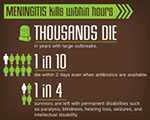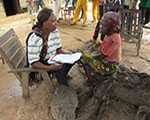Introducing New and Underused Vaccines
Promoting the Value of New and Underused Vaccines
The lives of more than 2 million children under 5 years old could be saved if Haemophilus influenzae type b (Hib), pneumococcal, and rotavirus vaccines were used in all countries. Using these vaccines can result in at least a 40% reduction in the deaths caused each year by pneumonia and diarrhea among children younger than 5 years old. CDC provides scientific evidence to countries throughout the world for the introduction of many new and underused vaccines, including those against: cholera, Hib, hepatitis B, human papillomavirus (HPV), Japanese Encephalitis, serogroup A meningococcus, pneumococcus, rotavirus, rubella, typhoid, and yellow fever.
Introducing Vaccines to Country Immunization Programs
CDC actively participates in the evaluation, introduction, and research of available and underused vaccines. These vaccines have the potential to reduce global illness and death caused by vaccine-preventable diseases.

Vaccines work. This mother in Sierra Leone will be protected from yellow fever.
- Page last reviewed: January 27, 2014
- Page last updated: January 27, 2014
- Content source:
Global Health
Notice: Linking to a non-federal site does not constitute an endorsement by HHS, CDC or any of its employees of the sponsors or the information and products presented on the site.


 ShareCompartir
ShareCompartir


